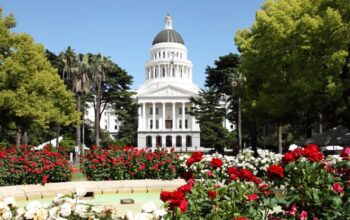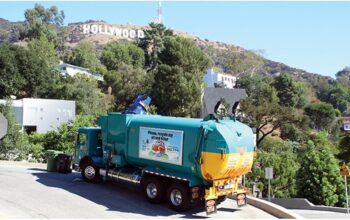Several years ago, the people of California gave the Hollywood Slicky billions to build water storage facilities. To date, not a dime has been spent. Our lack of water is not due to a drought, it is due to Sacramento, wanting us to have a lack of water. There is no excuse for the mismanagement of our water by the Governor. All the words, studies, interviews will not build dams.
In fact, to make to worse, Newsom is using tax dollars to demolish dams, with no replacement for the water or energy. Stop the academics, let’s get real.
Rain Won’t End California’s Water Troubles, but Better Infrastructure Might

Record rain and snowfall are easing drought pressures, but California can’t overcome long-term water challenges if infrastructure is neglected.
Carl Smith. Governing, 3/24/23
In Brief:
· After its driest years on record, California received a bounty of rain and snow from winter storms.
· While these have eased drought conditions, almost 40 percent of the state is still in moderate or extreme drought.
· Infrastructure improvements are essential if the state is to manage such extremes and achieve water resilience.
California had suffered through the three driest years on record when its rain season began last November. The La Niña climate pattern usually associated with lower rainfall in the state was still in place.
But a National Oceanic and Atmospheric Administration (NOAA) blog dedicated to monitoring La Niña and its opposing climate pattern, El Niño, notes that the presence of either is “a guarantee of absolutely nothing.” This forecast proved to be accurate. The state has been hit by 12 “significant” atmospheric river storms this winter, and almost 30 in total.
As of March 22, total precipitation in California was 146 percent above the historical average, and 20 percent above the average year-end total with five months to go before the next rain season begins. Across the state, snowpack is 75 percent above normal levels, with the deepest measured level at over 22 feet.
Reservoirs and groundwater are being replenished, but this does not represent the end of drought even in the short run. Almost 40 percent of the state is still in moderate to extreme drought conditions.
La Niña is gone, replaced by the El Niño pattern usually associated with better rain seasons, but NOAA’s cautionary note about what this really means still holds. The historical record is sobering. Studies of tree rings and sediments have revealed droughts in California’s last thousand years that lasted 10 to 20 years, not to mention one beginning in 850 that lasted 240 years.
California won’t be able to navigate its water future without 21st-century water infrastructure. A recent white paper from the Milken Institute lays out a framework for investment and governance that could move the state toward the water resiliency it will need to sustain its population and economy.
People Here, Water There
The economies in most of California’s large urban areas depend on “the ability to import water from distant regions,” the report notes. The same is true for much of the land devoted to agriculture. The sector lost an estimated $1.2 billion in output and 9,000 jobs because the state’s infrastructure could not adapt during the 2021 drought, say the authors.
The infrastructure needed to manage water delivery encompasses not just conveyance but also storage, groundwater management and reclamation, including water recycling.
Each state’s water supply and infrastructure have their own characteristics, but the solutions that California develops have potential to inform efforts elsewhere.
One of the consequences of warming is that even states with higher average rainfall rates are experiencing prolonged periods of drought followed by heavy storms. Although the yearly total is not decreasing, it is arriving in ways that are overwhelming existing water infrastructure.
Matt Horton, senior adviser to the Milken Institute, is co-author of the resilient water infrastructure report. He talked to Governing about the ways that recent events have underscored the importance of its recommendations.
Governing: Are there lessons in these recent storms?
Matt Horton: The specter of drier dries, and preparing for wetter wets, should be guiding our decision-making process at this time. How do we capture more rainwater? How do we capture more snow melt? How do we convey more water across different areas of the state? How do we store more of it into the ground?
Although it’s being alleviated right now, scientists agree that the drought condition that we’re in probably isn’t going anywhere. A 21st-century infrastructure solution has to begin at the governance and investment prioritization standpoint.
In the report we talk about needing a whole-state approach that guides investments. If we don’t bridge divides on politics, data analysis, public-private partnerships and decision-making processes, we’re not going to get to a place where we are shoring up water infrastructure with a holistic approach.
Governing: What kinds of investments are needed?
Matt Horton: The need around the state to address insufficient storage to capture water is somewhere around $8 billion. In the Central Valley alone, we looked at around $150 million worth of shovel-ready projects that are in some state of readiness and need some kind of impetus toward development.
One question we’ll have to answer in terms of coordinated governance and policymaking is how we can accelerate project development with some of the funds from the Infrastructure Investment and Jobs Act.
Governing: How does agriculture figure in all this?
Matt Horton: Agricultural products are a huge part of California’s economy. We focus this report primarily on a Central Valley case study perspective because of the economic tie-in to land. The Westlands Water District [a Central Valley entity that is the country’s largest agricultural water district] generates and supports more than 35,000 jobs.
If the drought continues after this period of atmospheric rivers and deluges, what are we going to do with land that becomes drier and less arable?
Governing: Do current challenges require a different view of water infrastructure?
Matt Horton: We need to rethink what a 21st-century water infrastructure framework looks like, one that meets the needs of different parts of the state and different communities. There’s big disconnection from a state governance standpoint between different residents and different parts of the state versus others. We need a governance solution that better mitigates geographic divides and better coordinates investments to meet the state economic needs and the needs of residents.
Governing: Could better infrastructure reduce the state’s need for water from the Colorado River to any extent?
Matt Horton: “We need to rethink what a 21st century water infrastructure framework looks like, one that meets the needs different parts of the state and different communities.”
(Milken Institute)
Matt Horton: San Diego has done a really good job of kind of separating themselves from the state water project, building their own supplies and shoring up some of that supply. Imperial County [one of the top 10 agricultural regions in California], on the other hand, is tied to water allocations for farmland from the Colorado River.
San Diego’s investments to capture and store more water to give them security are a model for a lot of the rest of the state to think about and maybe scale up.
Governing: The Pacific Institute has said that California can have enough water if it manages it right. Would you agree?
Matt Horton: I do. But in a large sense, we’re not prepared. We’re kind of handcuffed at this moment to decisions of the past.
I think we’re also a bit afraid — not just on a local or regional level, but on a state and maybe the national level — about the governance, coordination, development, timeline and the cost of rectifying some of those decisions from the past and solving for the challenges we are presented with now.



